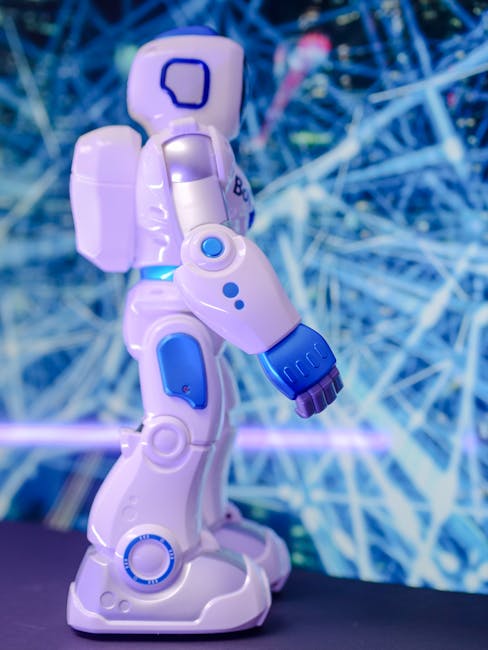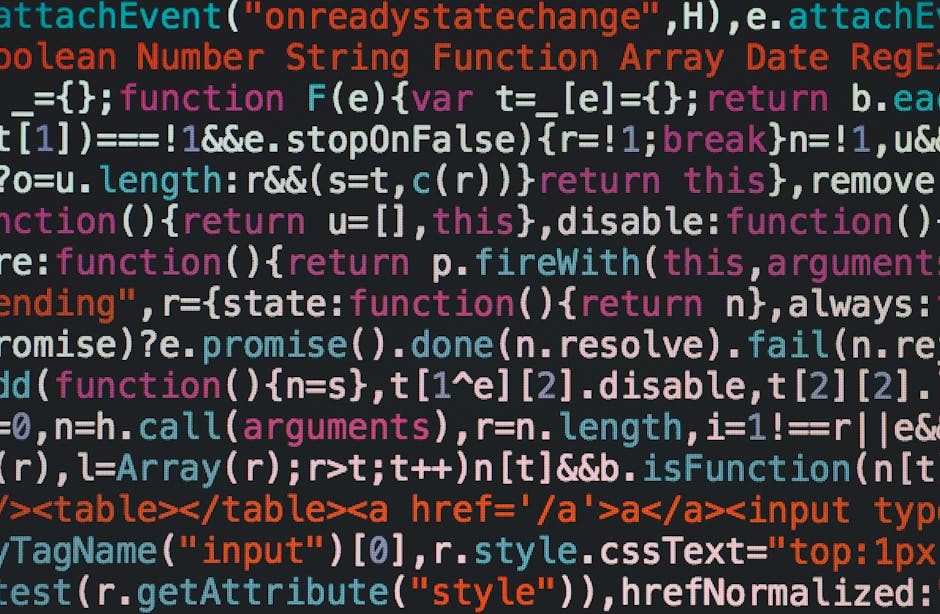AI agents are no longer just futuristic concepts—they’re now essential teammates in the modern workplace, transforming everything from customer service to strategic decision-making. Companies worldwide are deploying agentic AI to automate tasks, boost efficiency, and even reshape organizational structures. As the cognitive era dawns, managing fleets of intelligent agents is fast becoming a critical business skill, promising a smarter, more agile future for enterprises of all sizes.
Agentic AI: The Cognitive Era Arrives
Agentic AI represents a leap beyond traditional automation. Unlike static bots, agentic AI can set goals, make decisions, and adapt to changing environments. This shift is ushering in the “cognitive era,” where businesses rely on fleets of intelligent agents to solve complex problems, enhance creativity, and unlock new value streams. The result is a more resilient, innovative, and data-driven enterprise.
7 Popular AI Agents Transforming Industries
Mashable highlights seven AI agents gaining widespread adoption across various sectors:
OpenAI GPT-4 Agents
These agents excel at natural language understanding and generation, proving invaluable for drafting emails, summarizing lengthy documents, and automating customer support interactions. Their ability to comprehend and produce human-quality text makes them powerful communication tools.
Anthropic Claude Agents
Claude agents distinguish themselves through their focus on safety and reliability. They are adept at handling sensitive data processing, ensuring compliance with regulations, and managing internal knowledge management tasks, all while minimizing risk.
Google Gemini Agents
Gemini agents seamlessly integrate with Google Workspace and enterprise data lakes, enhancing search capabilities, powering data analytics, and automating complex workflows. Their tight integration with Google’s ecosystem allows for efficient data management and enhanced productivity.
Microsoft Copilot Agents
Embedded within Office 365 and Azure, Copilot agents act as tireless digital assistants, assisting with scheduling, data analysis, and project management. Their ability to automate routine tasks frees up human workers to focus on more strategic initiatives.
Salesforce Einstein Agents
These AI agents empower companies to stay ahead in competitive markets by driving sales forecasting, lead scoring, and delivering personalized marketing experiences. Their predictive capabilities enable businesses to optimize their sales strategies and improve customer engagement.
UiPath Robotic Process Automation (RPA) Agents
Specialized in automating repetitive back-office tasks, UiPath agents free up human workers for more strategic roles. Their ability to streamline workflows and minimize errors significantly boosts overall operational efficiency.
SAP Joule Agents
SAP’s AI agents optimize supply chains, manage procurement processes, and deliver real-time business insights to decision-makers. Their ability to analyze data and identify trends enables businesses to make informed decisions and improve operational performance.
Real-World Examples of UiPath RPA Agent Applications
UiPath RPA Agents are widely adopted across industries to automate repetitive, rule-based tasks, streamline workflows, and boost productivity. Here are some detailed, real-world examples:
Data Migration and Record Extraction
Example: Dentsu, a global digital marketing company, used UiPath RPA to build 60 robots in just six days, automating the extraction and migration of over 2.8 million records. This saved 125,000 hours, improved data analysis, and ensured business continuity during tight project timelines. The automation allowed the team to complete a massive data migration project efficiently, showcasing the power of teamwork and UiPath’s automation capabilities.
Compliance and Regulatory Reporting
Example: Sumitomo Mitsui Financial Group and Sumitomo Mitsui Banking Corporation implemented UiPath RPA to automate compliance processes and routine operations. The result: over 400,000 hours of annualized savings across 200 operations, with projected cost reductions of $450 million. Automation increased visibility, ensured regulatory compliance, and streamlined reporting, transforming the bank’s operational efficiency.
Document Processing and Extraction
Example: Health Fidelity, a healthcare company, leveraged UiPath RPA to extract over 1.2 million records from unstructured documents in a HIPAA-compliant manner. This automation improved security, reduced manual bottlenecks, and enabled the company to handle different electronic medical records (EMRs) efficiently, increasing productivity and competitiveness.
Inventory Optimization and Administrative Automation
Example: Trelleborg Municipality in Sweden used UiPath RPA to automate administrative tasks in Social Services and Labor Market departments. The automation led to significant time savings, cost reductions, and improved citizen participation. Employees found the automation process quick and satisfying, allowing them to focus on higher-value services.
Service Desk and SLA Management
Example: Cadence Design Systems enhanced their support experience by automating service desk processes with UiPath. Tasks such as employee onboarding/offboarding, self-service group management, and security compliance were automated, resulting in a 30% increase in resolution rate and a 40% reduction in resolution time. This improved operational efficiency and customer satisfaction.
Healthcare Monitoring
Example: Northampton General Hospital NHS Trust automated the monitoring of oxygen tank levels using RPA. The solution provided 24/7 monitoring, freed up 1,500 staff hours, and ensured accurate data reporting, improving compliance and saving costs in the healthcare sector.
SAP Process Automation in Manufacturing
Example: A leading global sugar producer used UiPath to automate crucial SAP processes in finance and controlling departments. Automations included a self-invoicing platform, EUR-pallet management, customer status tracking, and a web scraper for stock index data. This diversified automation improved efficiency and allowed the company to scale automation across departments.
Animal Shelter Data Processing
Example: A local animal shelter automated the manual data entry process using UiPath RPA, freeing up staff to focus on animal care and adoption. The bots handle intake information, medical records, and owner search requests, reducing errors and saving time.
Sales Order Processing
Example: A retail chain automated the entire sales order processing cycle, from order receipt to inventory update, using UiPath. This eliminated manual data entry, reduced order fulfillment time, and improved accuracy.
Free and Open Source RPA Alternatives
Managing fleets of intelligent agents and implementing RPA solutions can be resource-intensive. Fortunately, several free and open-source options offer powerful automation capabilities.
Robot Framework
What it does: While primarily a test automation tool, it’s widely used for RPA thanks to its keyword-driven approach and extensibility. Supports web, desktop, and even mobile automation.
OpenRPA
What it does: A robust, drag-and-drop RPA tool with visual workflow design. Integrates well with Node-RED for orchestrating complex automations, and supports both web and desktop automation.
TagUI
What it does: Allows scripting automation in simple, human-readable language. Supports desktop and web automation, OCR, and can be integrated with Python and R.
Taskt
What it does: No-code tool for Windows with a screen recorder and drag-and-drop designer. Easily record your actions and replay them as bots.
Robot Framework
What it does: A versatile open-source automation framework for robotic process automation, test automation, and acceptance testing. Provides a rich set of keywords for common actions. Supports a large ecosystem of libraries and tools.
UiPath Community Edition
Offers limited access to the powerful features of the commercial UiPath platform for learning and development purposes. Great for individuals and small teams exploring RPA.
Summary
UI Vision RPA, OpenRPA, TagUI, Taskt, and Robot Framework are all free, open source, and capable of automating desktop UI and legacy apps. These tools offer a range of interfaces: from no-code/drag-and-drop (UI Vision, OpenRPA, Taskt) to scripting/command-line (TagUI, Robot Framework). You can automate tasks like clicking, typing, reading data from screens, file operations, and more—without the licensing costs of commercial RPA suites.
The Future of Work with AI Agents
As AI agent technology continues to evolve, we can expect to see even more sophisticated applications across various industries. From personalized customer service to automated manufacturing processes, AI agents have the potential to transform the way we work and live. Managing these agents effectively will be critical for organizations to remain competitive and maximize the benefits of this transformative technology.
Managing Fleets of Intelligent Agents
Implementing and maintaining AI agent solutions requires careful planning and ongoing management. Best practices include:
- Centralized Management: Utilizing a central platform for monitoring, controlling, and updating agents.
- Security Measures: Implementing robust security protocols to prevent unauthorized access and protect sensitive data.
- Performance Monitoring: Continuously monitoring agent performance and identifying areas for optimization.
- Skill Development: Investing in training and development programs to equip employees with the skills needed to manage and maintain AI agent solutions.
Conclusion
AI agents are rapidly changing the landscape of business operations. Understanding their capabilities, implementing them strategically, and managing them effectively will be essential for organizations to thrive in the age of automation. The opportunities are vast, and the future is bright for those who embrace this transformative technology.




Leave a Reply
You must be logged in to post a comment.